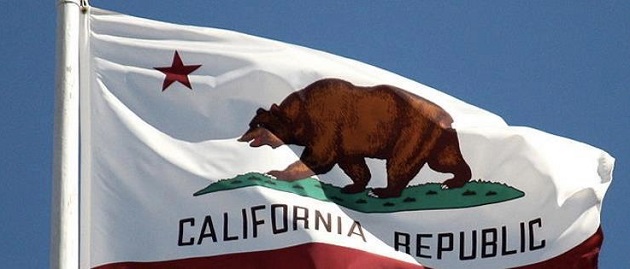Until recently Californians were in the dark when it came to the state’s natural gas distribution system and its pollution. But all that is changing now; for the first time ever, consistent data on the annual methane emissions from gas utilities is available for all to see. And what does this data show? California has room to reduce leaks and tighten the integrity of its gas delivery system.
system and its pollution. But all that is changing now; for the first time ever, consistent data on the annual methane emissions from gas utilities is available for all to see. And what does this data show? California has room to reduce leaks and tighten the integrity of its gas delivery system.
A move toward better transparency
California’s recent step to boost disclosure of the amount of emissions leaked and number of repairs made to gas pipelines and other equipment is the product of Senate Bill 1371 (Leno) passed in 2014, and subsequent regulations from the California Public Utilities Commission (CPUC). SB 1371 took this approach because methane, the main component of natural gas, is a powerful climate pollutant that puts our environment and communities at risk with a leak-prone system across the natural gas transmission, distribution and storage sectors.
This bill also resulted in the CPUC developing new formulas to calculate the statewide amount of gas that California customers pay for, but which is not delivered because it is leaked or vented into the air. This is important because SB 1371 also required that revenues for all activities identified and required to be adjusted based on the amount of “lost and unaccounted for gas”, meaning that customers are not left paying the bill for what gas goes unused.
Results speak for themselves
Last month, in a breakthrough for transparency, utilities submitted their eye-opening leak reports to the CPUC, shedding much-needed light on the state’s continued problem with gas leaks and methane pollution.
Here are some key findings that emerged from the reports:
- California lost a lot of gas in 2015
In all, California lost almost 10 billion standard cubic feet of gas last year. While Aliso Canyon’s 2015 load was approximately one-third of this, the remaining gas lost through “normal” leaks and vents (about 6 billion SCF) has the same 20-year climate impact of burning about 1 billion gallons of gasoline.
- Leaks have been going on for years
One surprising and unfortunate finding from the reports was the age of the methane leaks in the state, highlighting chronic problems with repair practices.
For instance, of the almost 46,000 distribution pipeline leaks reported by SoCalGas in 2015, more than 20 percent remained open at the end of the year, and over 1,000 of them have been leaking for five years or longer.
PG&E isn’t really any better in this regard, reporting that over 9,000 of their 20,000 total distribution pipeline leaks were left unrepaired for an average of over three years, while many exceeded five years – and at least one was over 30 years old. While the report didn’t explain why these leaks were left unfixed for so long, these chronic leaks show that improvements in leak detection and repair practices are urgently needed.
- Top emissions sources are consistent across many or all of the utilities
All three of the largest California gas utilities Pacific Gas & Electric (PG&E), Southern California Gas Company (SoCalGas), and San Diego Gas & Electric (SDG&E) reported customer meter leaks as a leading source of emissions. Metering and regulating station leaks, distribution pipeline leaks and transmission pipeline blowdowns were also found to be a significant emission source at many of the utilities. This reinforces the need for more frequent detection and prioritized repair of leaks. Blowdowns, which are intentional releases of gas to test or repair pipelines, can be easily and cost effectively mitigated, allowing for immediate reductions from a large emission source.
- Aliso Canyon was huge, but not an isolated problem
Not so surprisingly, these reports reinforced the size and scale of the Aliso Canyon leak. This catastrophe accounted for 60% of SoCalGas’s system-wide emissions in 2015. It was also bigger than PG&E’s total annual emissions last year and nearly 15 times the annual emissions from SDG&E’s entire system. The reports, however, confirm that Aliso Canyon is an extreme example of an all-too common problem, and highlight the need for regulations to require more frequent leak survey and leak repair.
- More improvements are needed for transparent, consistent reporting
Despite the findings noted above, what’s notable is what wasn’t included in the utilities’ methane leaks reports. For instance, many leaks had missing emissions data, and other emissions measurements weren’t assumed to apply to the entire system, likely leading to underestimates in emissions and leaving room for improvement.
In addition to leak reporting, SB 1371 also required utilities to fix leaks and reduce venting using best practices available in the gas industry. As this data shows, with thousands of leaks ongoing across the state, careful yet aggressive implementation is needed.
This initial round of data is a breakthrough for gas customers, who deserve to know how much gas is lost, and for utilities, giving them the tools needed to run a more efficient system. However, there is more work to be done to develop consistent reporting standards. Only then can we accurately determine the biggest sources of methane emissions and reduce these leaks, benefitting both Californians and our environment.
By Luis Bourgeois, Public Policy Intern, Oil and Gas Program
Originally Published on August 23, 2016
The Energy Exchange Blog is a forum where EDF‘s energy experts discuss how to accelerate the transition to a clean, low-carbon energy economy. Follow them on Twitter here: @EDFEnergyEX

